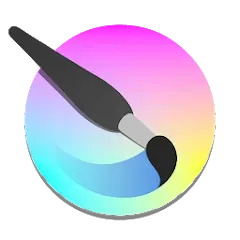ADVERTORIAL
What is Krita?
• Open-Source Software: Krita is free to download and use, making it accessible for all artists.
• Digital Painting Tool: Designed primarily for creating digital art, illustrations, and concept art.
• Cross-Platform Compatibility: Available for Windows, macOS, and Linux.
• Active Community: Supported by a vibrant community that contributes to its ongoing development and improvement.
Features of Krita
• Brush Engine: Offers a versatile brush engine with customizable brushes and tools tailored for various styles.
• Layers and Masks: Supports multiple layers, including adjustment layers, masks, and grouping options for complex compositions.
• Vector Tools: Includes vector drawing tools for precise line work and shapes.
• Animation Support: Provides a simple animation feature, allowing users to create frame-by-frame animations.
• Stabilizers: Built-in stabilizers help create smooth lines, beneficial for inking and drawing.
• Color Management: Advanced color management tools support various color profiles for accurate color representation.
• Resource Manager: Easy access to import and export brushes, textures, and other resources.
• User-Friendly Interface: Customizable workspace that adapts to individual user preferences, making navigation intuitive.
Pros and Cons
Pros
• Free to Use: As an open-source program, Krita is completely free, with no hidden costs.
• Rich Feature Set: Provides a comprehensive suite of tools that rival many paid applications.
• Community Support: Active user community offers tutorials, forums, and resources for learning and troubleshooting.
• Frequent Updates: Regular updates and improvements ensure that the software remains current and relevant.
• Cross-Platform: Works on multiple operating systems, ensuring flexibility for users.
Cons
• Learning Curve: While powerful, Krita may require time to master, especially for beginners.
• Performance Issues: Some users report performance lags, particularly on older hardware or when working with large files.
• Limited 3D Features: Lacks extensive 3D modeling capabilities compared to some other graphic software.
• Inconsistent Updates: While updates are frequent, some features may still be in development or have occasional bugs.
Functions of Krita
• Digital Painting: Create stunning digital artwork using a wide range of brushes and tools.
• Illustration and Concept Art: Ideal for illustrators and concept artists looking to develop characters, environments, and more.
• Animation Creation: Users can create simple animations and export them for various uses.
• Photo Manipulation: Offers tools for editing and enhancing photos.
• Texture and Pattern Design: Create unique textures and patterns for various projects.
• Exporting Options: Supports a variety of file formats for exporting artwork, including PSD, PNG, and JPEG.
How to Use Krita
1 Download and Install:
◦ Visit the official Krita website and download the version compatible with your operating system. Follow the installation instructions to set it up.
2 Familiarize Yourself with the Interface:
◦ Open Krita and explore the layout. The main areas include the canvas, toolbar, and dockers (such as layers and brush settings).
3 Create a New Document:
◦ Select “File” and then “New” to create a new canvas. Choose your desired dimensions and resolution.
4 Choose Your Brush:
◦ Access the brush presets from the toolbar. Krita offers a wide range of brushes, including pencils, inks, and paints. Select one that suits your style.
5 Start Drawing:
◦ Use your stylus or mouse to begin sketching on the canvas. Experiment with different brushes and settings to find your preferred technique.
6 Utilize Layers:
◦ Use layers to separate different elements of your artwork. This allows for easier editing and adjustments. Right-click in the layers docker to add new layers, and use masks for non-destructive editing.
7 Explore Color Options:
◦ Access the color selector to choose and modify colors. Krita supports various color modes, including RGB and CMYK.
8 Save Your Work:
◦ Regularly save your project by selecting “File” and then “Save As.” Use the .kra format to preserve layers and settings.
9 Create Animations (if desired):
◦ To create animations, open the Animation Workspace and use the frame-by-frame tools to design your animation.
10 Export Your Artwork:
◦ When you’re finished, export your artwork by selecting “File” and “Export.” Choose the appropriate format for your needs, such as PNG for images or GIF for simple animations.
